Watching your child grow and develop is one of life’s greatest joys, but understanding the finer details of their progress, like gross motor skills milestones, can sometimes feel overwhelming. From your baby’s first attempts to roll over to your toddler’s confident steps, each stage builds the foundation for their physical abilities. Recognizing these milestones can help you better support their growth and know when they might need a little extra help.
As a pediatric occupational therapist with over 20 years of experience, I understand how crucial early intervention is. Slight delays in gross motor skills milestones—like sitting, crawling, or walking—might seem minor but could signal the need for additional support. If you’re unsure what to look for, it can be challenging to know how to help your child at home. That’s why understanding these critical developmental stages is so important.
This guide will walk you through the stages of gross motor skill development and offer practical activities to strengthen these abilities. By actively engaging with your child, you can make a big difference in their growth while creating fun, memorable moments together. Let’s explore how you can support your child’s journey with confidence, and if concerns arise, know that help is available to get them back on track. Early action leads to lifelong success!
Key Takeaways
- Understand the gross motor skills milestones, such as crawling, walking, and jumping, which display a child’s balance, coordination, and body control.
- Engage your child in indoor and outdoor activities, such as obstacle courses, dance parties, swimming, and hiking, to enhance their gross motor skills.
- Monitor your child’s progress, identifying any delays in gross motor skills development, which struggles in large muscle movements may indicate.
- Early intervention is crucial when delays are identified; structured activities and physical therapy can support gross motor skill development.
- Promote a healthy lifestyle through gross motor skills activities like basketball, yoga, swimming, and gymnastics for physical fitness and cardiovascular health.
Understanding Gross Motor Skills
Diving into the domain of large muscle movements, it’s essential to understand that these are more prominent muscle movements that a child often engages in, such as crawling, walking, and jumping. These skills play a significant role in a child’s physical development, delivering fundamental abilities for balance, coordination, and overall body control. Activities such as hopscotch and obstacle courses also boost a child’s cognitive skills and confidence while promoting problem-solving abilities and spatial awareness.
Large muscle movements vary by age, and each stage of a child’s development comes with distinct milestones. For instance, infants start manifesting large muscle movements when they begin crawling, while toddlers further refine these skills as they start walking and eventually running. These milestones serve as crucial indicators of a child’s physical development, allowing parents and caregivers to track progress and identify any potential delays.
Activities that boost large muscle movements include climbing, running, throwing, and catching. These activities foster the child’s development, enhance their physical strength, and promote spatial awareness. Understanding large muscle movements is not merely about acknowledging their existence but involves actively engaging in practices that stimulate and improve these skills. By doing so, we champion the complete development of our children, equipping them for a life of physical activity and health.
Importance of Gross Motor Development
Gross motor development is crucial as it forms the basis for fundamental movements such as walking, running, and jumping. These movements, strengthened by specific exercises, utilize large muscle groups. These skills play a crucial role in physical coordination, balance, strength, and body awareness. Encouraging these skills in children not only promotes their physical growth but also positively impacts their general health.
Understanding Gross Motor Skills
Gross motor abilities, the foundation of physical progress, involve significant muscle movements like creeping, strolling, scaling, and leaping. These abilities establish the base of a child’s physical aptitudes and play a vital role in nurturing equilibrium, coordination, vigor, and body consciousness.
Participating in physical exercises that encourage Gross Motor Progress is essential for a child’s advancement and self-assurance. By monitoring developmental milestones, parents can supervise their child’s growth and guarantee their muscle abilities are evolving at a healthy pace.
Here’s a summary of some critical gross motor abilities and their significance:
| Ability | Description | Importance |
|---|---|---|
| Creeping | Motion using hands and knees | Develops vigor and coordination |
| Strolling | Progress forward by placing one foot in front of the other | Enhances equilibrium and self-sufficiency |
| Scaling | Ascending or descending objects using feet and hands | Heightens spatial consciousness and physical vigor |
| Leaping | Propel oneself off the ground | Builds lower body vigor and coordination |
| Running | Progress swiftly on foot | Promotes cardiovascular health and agility |
Comprehending gross motor abilities readies parents to aid and encourage their child’s physical progress, preparing the ground for future fine motor skills development.
Gross vs. Fine Motor Skills
In child development, there is a clear differentiation between large and small motor skills. Considerable motor skills involve the bigger muscle groups and form the foundation of essential actions like crawling, walking, jumping, and climbing. These skills, which can be enhanced through activities such as trampolining, martial arts, and obstacle courses, are fundamental for complete body coordination and balance, giving children the ability to navigate their world.
On the other hand, small motor skills focus on tinier, more precise muscle movements, particularly in the hands and fingers. These skills are crucial for tasks that require hand-eye coordination, such as writing, drawing, and manipulating small objects.
However, these two areas of motor development are interdependent. The development of considerable motor skills is fundamental for small motor skills. A child with strong core muscles and good whole-body coordination will find it easier to perform intricate hand movements.
Moreover, considerable motor skills play an essential role in daily activities and sports participation. They contribute significantly to a child’s physical health, confidence, and independence. Encouraging the development of considerable motor skills through activities like running, jumping, and climbing can thus help children build strength, agility, and overall physical abilities.
Managing Gross Motor Delays
While considerable motor skills play a significant role in a child’s physical abilities and confidence, difficulties may arise in their development due to various reasons. Gross motor delays can stem from medical conditions like low muscle tone, central nervous system disorders, or muscle disorders. Activities such as jumping on a trampoline or martial arts can be beneficial in enhancing these skills and can be integrated into a child’s routine under supervision.
A multidisciplinary approach is often essential in managing these delays. Pediatric physical therapists and pediatric occupational therapists can play a significant role, using their expertise to help children improve their movement abilities. Treatments may also involve referrals to specialists for further evaluation and intervention.
Parental involvement is another critical factor in managing gross motor delays. Parents and caregivers can support the child’s progress through therapy and home exercises, fostering an environment that encourages the development of these skills. Additionally, early intervention programs and hospital clinics provide resources and support to families, promoting ideal development even in the face of these challenges.
Gross Motor Skills Milestones
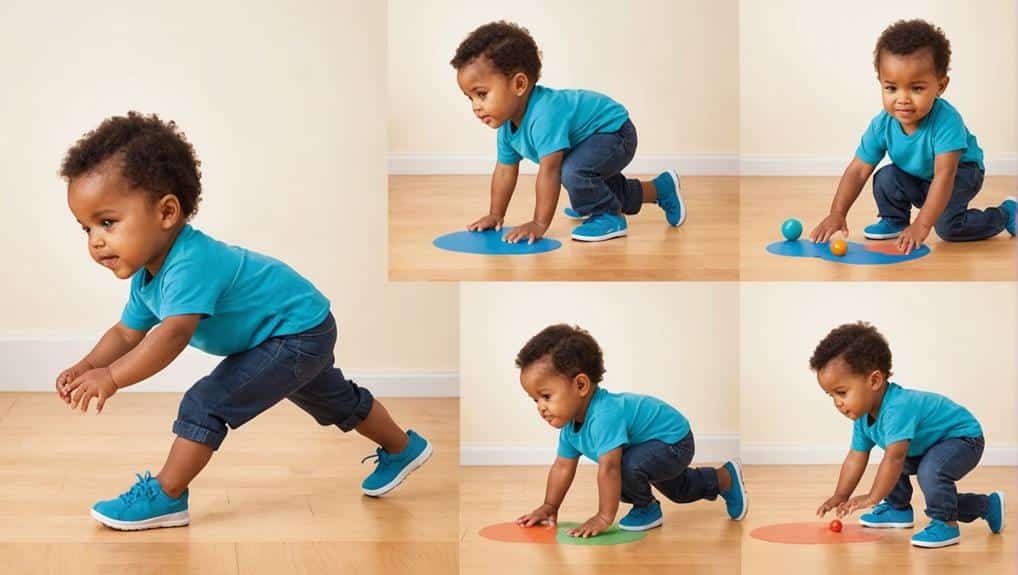
Monitoring a child’s progress in acquiring gross motor skills is a critical aspect of evaluating their complete physical development. Gross motor milestones, which include rolling over, sitting up, crawling, walking, running, jumping, climbing, and throwing or catching a ball, differ significantly at different developmental stages.
For infants, milestones such as head control and sitting balance are expected, while toddlers typically show progress in walking and climbing. By the time a child reaches the age of three, they should demonstrate the ability to walk up stairs independently, kick a ball, pedal a tricycle, and jump with both feet leaving the ground.
Engaging in physical activities like trampolining and riding tricycles can help practice balance and coordination, enhancing gross motor skills. Likewise, creative play, such as building obstacle courses, can increase problem-solving abilities while promoting gross motor development.
When a child turns five, parents should look for the ability to skip, hop on one foot, catch a bounced ball, throw a ball overhand, and balance on each foot for a few moments. Monitoring these gross motor milestones is crucial for tracking a child’s physical development and ensuring they are meeting age-appropriate skills. These milestones provide a strong foundation upon which more advanced skills can be constructed, promoting healthy growth and development. Activities to encourage gross motor development should be age-appropriate and stimulating.
Activities to Enhance Motor Skills
Building on the knowledge of significant motor skills milestones, it’s beneficial to investigate specific activities that can improve these skills. A cornerstone of child development, these activities are designed to foster physical activity and boost motor capabilities.
Introduce tummy time for infants, a potent considerable motor skill activity. This exercise strengthens core muscles, promotes head control, and lays the foundation for subsequent motor milestones. Sticker activities are also excellent for developing hand-eye coordination, a critical part of considerable motor skills.
As children progress to toddlerhood, they should be encouraged to traverse diverse surfaces, an activity that bolsters balance and coordination. Threading and lacing activities can also be introduced at this stage to hone fine motor skills and spatial awareness.
Consider setting up obstacle courses at home to refine your child’s motor skills further. These courses provide a dynamic environment for children to practice crawling, jumping, and climbing, strengthening their larger muscle groups and improving their overall motor abilities.
Dance parties can also be a fun and effective method for promoting coordination, rhythm, and motor skills. Finally, incorporating ball games, such as throwing and catching, fosters hand-eye coordination and muscle strength. Through these engaging and diverse activities, parents can significantly contribute to their child’s robust motor development.
Indoor Gross Motor Activities
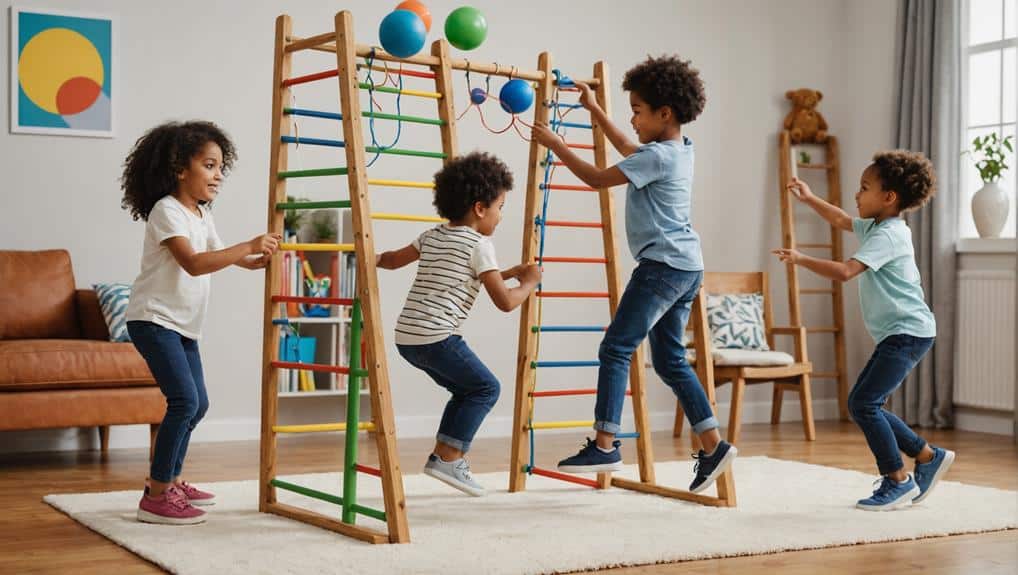
In child development, indoor physical activities are a valuable tool for enhancing the physical capabilities of infants and toddlers. These activities, expertly crafted into child care routines, stimulate physical movement, coordination, and balance, all vital for a child’s overall growth.
One popular indoor activity is setting up an obstacle course with pillows and blankets. This simple yet effective game offers a fun and safe way for children to investigate different textures and movement patterns. Likewise, parent-child yoga or tumbling classes promote flexibility, balance, and strength, furthering the development of physical skills.
Another enjoyable and interactive activity is the dance party. This activity not only nurtures a child’s fondness for music but also encourages active movement, coordination, and rhythm, all of which contribute to the enhancement of their physical skills.
Incorporating activities such as trampoline jumping or structured indoor sports like mini basketball or soccer can also offer a wealth of benefits. These activities foster a child’s coordination, agility, and endurance, making them vital components of a thorough indoor physical skill development program.
Outdoor Gross Motor Activities
Shifting our attention from the indoor environment, the outdoor setting also offers extensive chances for gross motor development in children. Outdoor activities such as swimming, playground play, hiking, and soccer promote movement and physical development, fostering improved gross motor skills. These activities encourage children to maneuver their bodies in different ways, thus refining their ability to balance, coordinate, and strengthen muscle groups.
Water play, bicycle or scooter riding, and hopscotch are extra outdoor activities that can significantly enhance gross motor skills by demanding different types of movement. Activities like sledding, skateboarding, and jumping rope provide further chances for balance, coordination, and strength building.
Outdoor play encourages children to investigate different terrains. This exploration not only boosts physical development but also enhances balance, coordination, and body awareness. Activities like ice skating, roller skating, and swinging, while enjoyable, also aid in the development of gross motor skills in children. This makes outdoor play a regular part of a child’s routine and can be pivotal in their holistic development.
Identifying Delayed Motor Skills
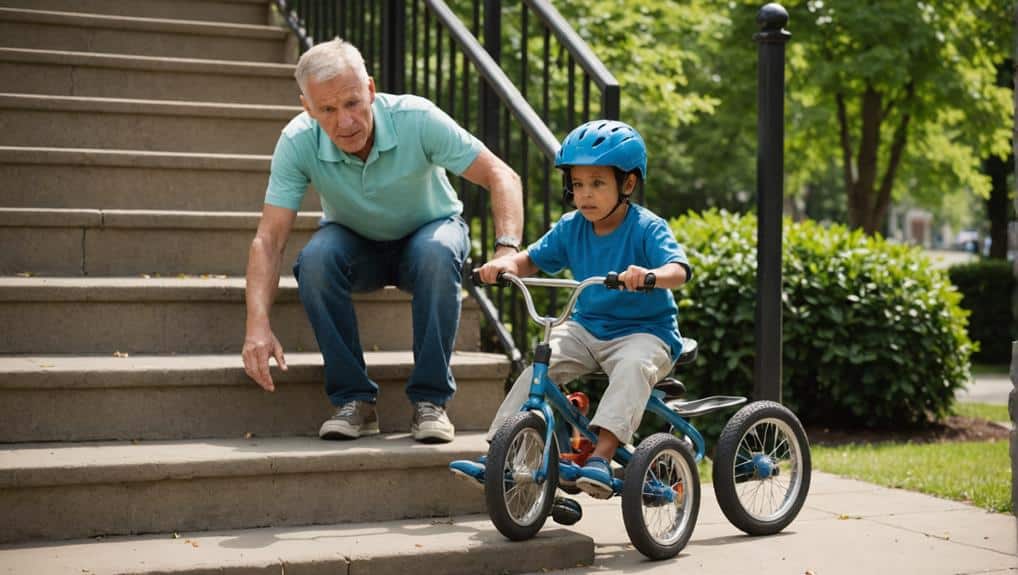
Recognizing signs of delayed motor skills in children is essential for early intervention and effective management. These delays may manifest in different ways, such as frequent stumbling, difficulty with coordination, reluctance in physical activities, or not meeting developmental milestones. Detailed understanding of the causes of such delays and seeking professional help can pave the way for successful interventions and improved outcomes.
Recognizing Signs of Delay
When evaluating a child’s development, one must pay close attention to their gross motor skills. Recognizing signs of delay early on is critical as it can pave the way for timely intervention and support. Frequent falling, clumsiness, or an aversion to physical activities can be indicative of potential delays.
Delayed milestones, such as late crawling or walking or poor coordination, are often clear signs that warrant further evaluation. Also, be observant of your child’s balance, coordination, and posture. Difficulty in these areas could suggest delayed gross motor skill development.
Be vigilant of muscle tone and movement, as poor muscle tone or imbalanced movements may indicate delayed gross motor skills. Early intervention and professional guidance are essential if persistent delays or concerns are noticed.
| Signs of Delay | Action to take |
|---|---|
| Frequent falling or clumsiness | Consult a healthcare professional |
| Delayed milestones | Seek early intervention |
| Poor muscle tone or imbalanced movements | Consult a pediatric physical therapist |
Causes of Motor Delays
While it’s essential to be aware of potential signs of delay in gross motor skills, understanding what causes these delays is of significant significance. Motor delays may stem from several underlying causes, and getting to the root of these causes is essential to mapping out an effective intervention strategy.
- Neurological and Genetic Disorders: Certain neurological conditions or genetic disorders can directly impact a child’s motor development. Conditions such as cerebral palsy or Down syndrome can cause motor delays, affecting a child’s ability to reach traditional physical milestones.
- Prematurity: Babies born prematurely often experience motor delays. Their muscles and bones have not had enough time to fully develop, which can result in difficulties with movement and coordination.
- Low Muscle Tone: Low muscle tone or hypotonia can also cause motor delays. Children with hypotonia may struggle with tasks like crawling, walking, or even maintaining balance.
It is essential to identify these underlying causes early on. Healthcare professionals can provide medical evaluations and assessments to pinpoint the reasons behind the motor delays. Prompt intervention based on these findings can then support a child’s development and overall well-being.
Seeking Professional Help
Monitoring your child’s development is a crucial aspect of parenthood. Spotting signs of delayed gross motor skills can be pivotal for early intervention. Persistent clumsiness, frequent falls, or avoidance of physical activities could indicate potential delays.
Should these delays be evident, a physical therapy evaluation is highly recommended. Pediatric physical therapists can assess your child’s strength, balance, coordination, and overall gross motor skills and provide targeted interventions. Remember, early intervention is crucial in addressing these developmental concerns.
In addition to professional help, parents can utilize resources like the CDC’s Milestone Tracker App or AAP guidelines. These tools can offer invaluable insight into your child’s development and when to seek professional assistance.
| Signs of Delay | Action | |
|---|---|---|
| Delay 1 | Persistent clumsiness or frequent falls | Physical therapy evaluation |
| Delay 2 | Difficulty with coordination, balancing, or swimming | Seek pediatric physical therapists |
| Delay 3 | Avoidance of physical activities | Early intervention |
| Delay 4 | Other delayed milestones | Use CDC’s Milestone Tracker App or AAP guidelines |
Strategies for Skill Improvement
Regularly engaging in structured activities like swimming or gymnastics can significantly contribute to the advancement of gross motor skills. When done consistently, these practices stimulate muscle strength, coordination, and agility, ultimately enriching a child’s physical development.
Moreover, home exercises such as jumping jacks and hopscotch also prove beneficial for skill improvement. These activities, while simple, are effective methods to encourage gross motor skill development. They offer a fun and easy way to integrate movement into children’s daily routines, making skill enhancement an enjoyable process.
To further support this development, consider the following strategies:
- Active Play: Encourage activities like walking, running, and playing ball games. These activities not only enhance gross motor skills but also promote children’s physical health and social interaction.
- Outdoor Activities: Utilize the natural environment for activities such as climbing, riding bikes, or playing in the sandbox. These experiences provide diverse opportunities for children to practice and improve their gross motor skills.
- Early Intervention: If gross motor skills delays are noticed, seek professional help promptly. Early intervention can significantly improve a child’s development, ensuring they reach their full potential.
These strategies, when implemented effectively, can significantly assist in the enrichment of gross motor skills in children.
Fun Activities for Skill Enhancement
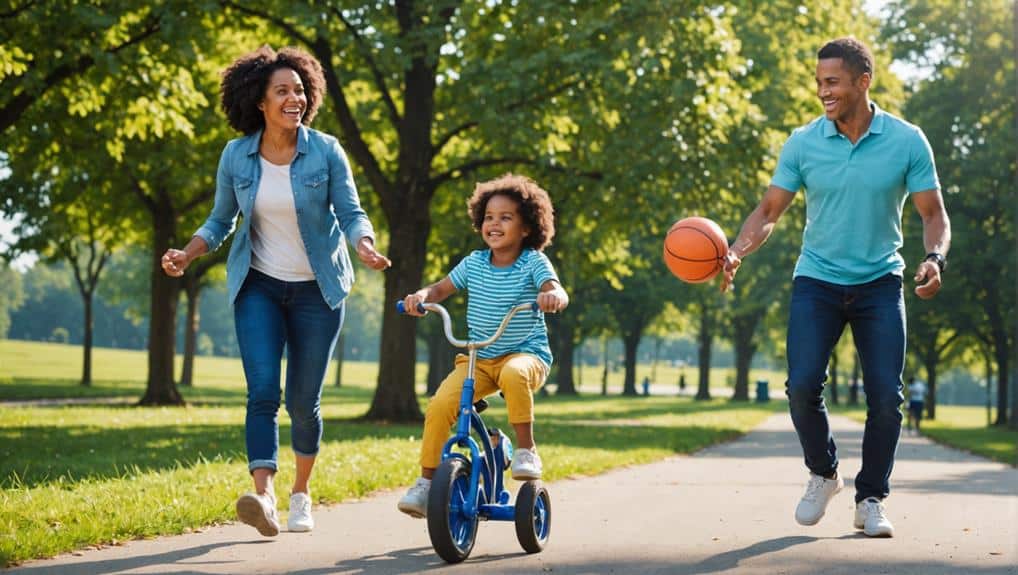
Exploring a range of fun activities can significantly boost children’s gross motor skill development. Encouraging children to engage in playful activities can be a powerful tool in helping them reach their developmental milestones.
One excellent approach is setting up obstacle courses at home. These can include activities such as crawling, jumping, climbing, and balancing, all of which are critical for gross motor skill improvement. Likewise, sensory paths with different textures and surfaces can be created for activities like jumping, spinning, and balancing. These paths not only provide physical stimulation but also engage children’s senses, fostering a holistic developmental experience.
Hosting dance parties is another effective and enjoyable activity. Dancing improves coordination, rhythm, and movement skills in a fun and engaging way. Nature walks can also enrich balance and exploration of diverse terrains, further promoting gross motor development.
Role of Physical Therapy in Development
Physical therapy, a crucial cornerstone of child growth, plays a pivotal role in identifying and addressing gross motor skill delays in children. Pediatric physical therapists possess the expertise to assess a child’s strength, balance, coordination, and motor skills, subsequently creating tailored intervention plans based on these evaluations.
- Assessment and Tailored Intervention: Pediatric physical therapists skillfully evaluate a child’s gross motor skill development. Based on their findings, they design personalized therapy plans that address the child’s specific needs and challenges.
- Collaborative Approach: Physical therapists collaborate with parents and other healthcare professionals. This teamwork ensures a holistic approach to improving the child’s physical development.
- Early Intervention and Progress: Seeking early assistance from a pediatric physical therapist can help the child overcome developmental obstacles, thereby enhancing their gross motor skills.
Physical therapy is significant in a child’s development because it addresses delays and enables children to maximize their potential. Therefore, the guidance of a pediatric physical therapist is invaluable in providing focused interventions to boost a child’s gross motor skills effectively.
Parental Role in Child’s Development
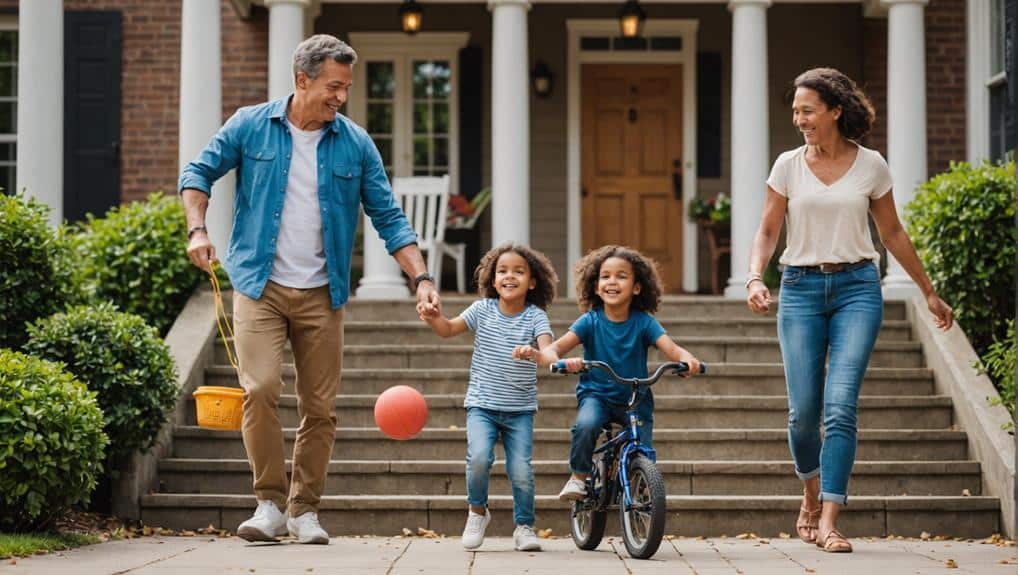
Parents’ involvement in their child’s gross motor skill development is pivotal. Their responsibilities range from understanding the child’s progress to encouraging physical activities to recognizing potential developmental delays. Parents should stay informed about the milestones in motor skills to monitor their child’s growth and identify any disparities in a timely manner. Encouraging physical activities not only fosters these skills but also strengthens the bonding between the parent and child, thereby promoting comprehensive development.
Understanding Child’s Progress
Inevitably, parents play a significant role in observing and tracking their child’s progress in gross motor skill development. Understanding this progression is crucial in fostering and enhancing these abilities. By being engaged and observant, parents can swiftly detect any developmental delays or abnormalities, which can then be addressed promptly with professional guidance.
It is also vital for parents to actively engage in developmental activities that promote gross motor skills. This hands-on involvement aids in the child’s physical development and further strengthens the parent-child bond. Regular interaction with healthcare professionals and therapists can provide valuable insight into the child’s progress, offering necessary guidance and support.
To effectively track and understand your child’s progress, consider the following steps:
- Regularly monitor the child’s achievement of gross motor milestones.
- Engage in activities that strengthen gross motor skills development.
- Seek professional advice regularly to understand the typical progression and to address any concerns early on.
Parents are not alone in nurturing a child’s gross motor skills. Healthcare providers, educators, and therapists are all partners in fostering a child’s growth and development.
Encouraging Physical Activities
Undoubtedly, parental influence profoundly impacts a child’s gross motor skills development, with physical activities playing a crucial role in this process. Parents serve as crucial motivators, guiding their children to participate in active games, sports, and outdoor play. These activities not only boost a child’s coordination and balance but also instill a sense of strength and confidence in their physical abilities.
As part of their role, parents can facilitate structured activities that foster movement and discovery. Encouraging actions such as jumping, running, and climbing can significantly improve a child’s muscle control and coordination – essential components of gross motor skills. By providing a supportive and stimulating environment, parents can help their children investigate and practice these skills safely and enjoyably.
Recognizing Developmental Delays
As a key figure in a child’s life, parents play an essential role in recognizing and addressing developmental delays in their child’s gross motor skills. Parents need to be observant of signs such as frequent tripping, difficulty with coordination, or delayed milestones, as these could indicate potential developmental issues.
- Early Intervention: Parents should not hesitate to seek early intervention if they notice these signs. Consulting with a pediatrician to gain a referral to a physical therapist or a specialist can provide the necessary support for a child’s development.
- Parental Involvement: Parents should also actively participate in therapy sessions and at-home exercises. This involvement can significantly improve the child’s gross motor skills and overall progress.
- Utilization of Resources: Parents can use developmental screening tools and professional guidance to track and address any developmental delays accurately. These resources provide an effective way to monitor the child’s progress and ensure their developmental needs are being met.
The parent’s role in early identification and intervention of developmental delays is vital. It paves the way for a supportive environment that promotes the child’s growth and development.
Gross Motor Skills and Healthy Lifestyle
Through the lens of health and wellness, gross motor skills play an essential role in promoting a healthy lifestyle. Engaging in activities that improve these skills contributes significantly to physical fitness and overall well-being. Regular participation in such activities fosters cardiovascular health and muscular strength, laying the groundwork for a lifetime of health and fitness habits.
Gross motor skills also facilitate the development of coordination, balance, and agility, critical elements for a healthy lifestyle. This development is significant in children, as those who master these skills early on are more likely to enjoy physical activity and maintain an active lifestyle as they grow older.
The table below illustrates the relationship between gross motor skills and a healthy lifestyle:
| Gross Motor Skill | Health Benefit | Recommended Activity |
|---|---|---|
| Coordination | Improved physical fitness | Basketball |
| Balance | Boosted agility | Yoga |
| Strength | Enhanced cardiovascular health | Swimming |
| Agility | Improved flexibility | Gymnastics |
Conclusion
Gross motor skills milestones are critical indicators of a child’s physical growth and development. While activities like indoor games, outdoor play, and fun exercises are great ways to encourage progress, knowing exactly how to support your child can sometimes be challenging. Parents can certainly work on gross motor and fine motor skills at home, but seeking guidance from a pediatric occupational therapist or physical therapist can make your efforts even more effective.
Most therapists are happy to share tips and recommend specific activities tailored to a child’s needs. From improving coordination to building strength, these professionals can help you better understand a child’s gross motor skills milestones and how to nurture them. With the proper support and tools, you can feel confident that your child is on the path to healthy, active development.

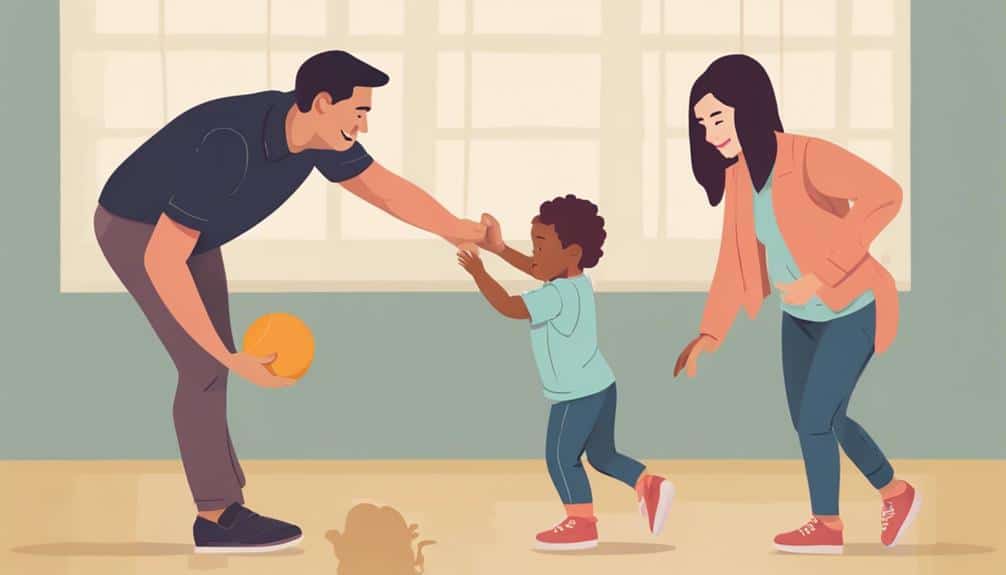
Recent Comments